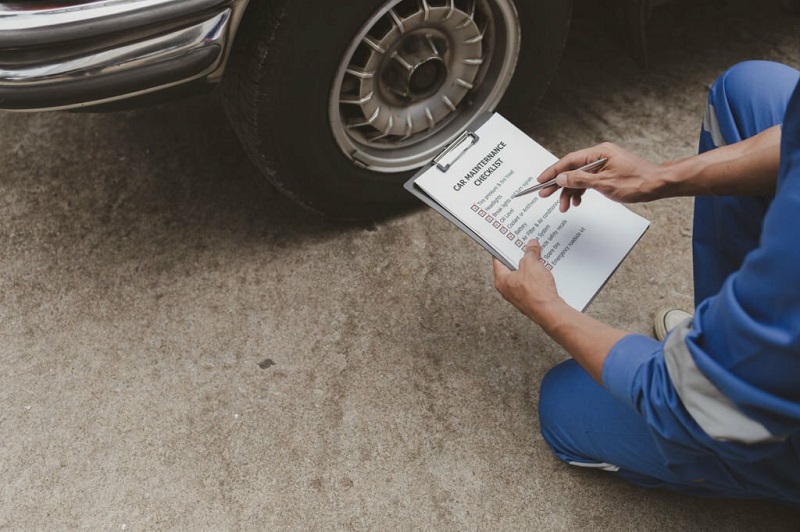
In the realm of vehicle ownership, have you ever found yourself flummoxed by the term ‘roadworthy certificate’? Have you ever wondered what it truly entails, why it’s so important, or how you go about obtaining one for your beloved four-wheeled companion? Or maybe you’re just a newbie in the complex world of vehicle regulations, trying to unravel the intricate tapestry that it is. Fear not! We are here to paper over the cracks in your knowledge and guide you through the labyrinthine process of securing a roadworthy certificate, demystifying the complex notions woven around it.
In this comprehensive guide, we will unearth the purpose behind the roadworthy certificate, shedding light on how it safeguards your automotive adventure. We go under the hood to break down the process of obtaining the certificate, mapping out the course for your convenience. We’ll also highlight the advantages and potential pitfalls you might encounter along the way, aiming to prepare you for the ride ahead.
But why listen to us? Because we, at the design files, believe in empowering our readers with meticulously researched, detail-oriented information that adds value to their daily lives. So fasten your seatbelts, and let’s begin this enlightening journey.
The What: Understanding the Roadworthy Certificate
In the world of smart machines and even smarter regulations, the roadworthy certificate stands as a testament to your vehicle’s capability to ply on the roads without posing any risk to the passengers, pedestrians or the environment. Before you delve into the process of securing one, it’s important to comprehend what exactly this certificate represents and its significance in your vehicle ownership journey.
Each state has a slightly different approach but generally, the certificate ensures your vehicle meets the minimum safety and environmental requirements laid down by local authorities. It validates that your vehicle is safe to drive, not just for you, but for everyone else sharing the road with you.
The intricacies might seem daunting at first, but understanding them is essential in maintaining the moral fabric of the driving ecosystem in which we exist. It makes the road a safer place for everyone, and isn’t that a cause worth understanding and striving for?
The Why: Importance of a Roadworthy Certificate
You’ve gotten to know ‘what’ the roadworthy certificate is, but ‘why’ should you acquire one? For starters, it’s a non-negotiable legal requirement when selling or re-registering a used vehicle. But more than just a legislative obligation, it’s a matter of social responsibility.
Furthermore, when you decide to put your used vehicle up for sale, the roadworthy certificate becomes your credibility card. It reinstates faith in your vehicle, making your potential buyer more confident about their purchase.
The certificate makes you a part of the solution, not the problem. It’s a small step towards a safer driving environment, reducing the risk of accidents caused by vehicle malfunction.
The When and Where: Roadworthy Inspections
Figuring out when and where to get your vehicle inspected for a roadworthy certificate can be a cause of confusion for many. The answer lies in your circumstances. If you’re planning to sell your vehicle or re-register it, then it’s time to book an appointment for a roadworthy inspection.
Primarily, you can approach an authorized service center or a licensed vehicle tester in your area. It’s essential to make sure that the service center is equipped with the necessary tools and skilled mechanics that can comprehensively investigate everything from tires, braking systems, windows, lights, to steering components and more.
The How: Process of Obtaining a Roadworthy Certificate
The process of obtaining a roadworthy certificate involves a vehicle inspection that primarily targets safety-related components. If the vehicle passes the inspection, the certificate is issued immediately. However, if it fails the test, you have a specific time (usually 7 to 14 days), depending on your area jurisdiction, to repair the faults and reapply for inspection.
Expect tire checks, steering and suspensions checks, headlights, brake lights, windscreen checks for cracks, and the overall condition of the body. In newer models, the engine management system is frequently checked as well. It’s a process that keeps vehicles to a high safety standard, so be prepared for a thorough check.
The Pros and Cons: Evaluating the Roadworthy Certificate Process
Like every process, obtaining a roadworthy certificate comes with its set of advantages and potential pitfalls. On the brighter side, it ensures your vehicle is safe to operate, increases its resale value, and brings peace of mind to potential buyers while fostering a healthy driving environment.
However, the process can pose challenges such as inconvenience and potential costs if your vehicle doesn’t pass the test at the first go.
Conclusion: The Road to Responsibility
So, there you have it – from understanding the basic premise behind the roadworthy certificate to diving deep into the steps involved in obtaining one, we’ve covered the ground for you. Acquiring a roadworthy certificate might seem like a task, but remember – it’s part of a much larger, altruistic picture. It’s about taking responsibility not just for your vehicle, but also your safety and that of others who share the road with you.
The roadworthy certificate process might not be easy, perfect, or hassle-free, but it’s an imperative checkpoint that ensures the road safety fabric of our society doesn’t falter. After all, the road to a safer driving environment begins with understanding and embracing these regulatory processes.





